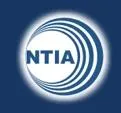Rural-urban broadband divide persists

The National Telecommunications and Information Administration unveiled a new series of reports called Broadband Briefs which analyze changes in broadband availability by speed, technology and location since 2010.
Notwithstanding a positive tone, the reports reveal that the digital divide persists - and that overall broadband in the U.S. leaves much to be desired. We remain slow expensive and unequally distributed.
On the positive side, NTIA claims that 98 percent of Americans have some form of to basic broadband access - not necessarily in their homes, but at work or some public facility. But, what NTIA characterizes as broadband varies widely in consumer access speeds. The report qualifies its broadband definition considerably:
"While basic broadband service - which we define as advertised speeds of 3 Mbps download and 768 kbps upload - is often adequate for sending and receiving email and other services, more of today's applications such as video streaming require much faster speeds."
In other words, although there has been improvement in broadband speeds in the last few years, Americans still must still put up with speeds that people in many developed countries would consider abominably slow. And, U.S. residents pay more than people in other countries.
According to Broadband Briefs, while there has been growth of both availability and speed, that growth is uneven. "Almost 100 percent of urban residents have access to download speeds of at least 6 Mbps, while 82 percent of rural communities can access these speeds."
And when it comes to fast broadband, that gap is even wider. "Our data show that 88 percent of urban areas and 41 percent of rural areas now have access to broadband speeds of 25 Mpbs."
Speed Matters supports a national policy which guarantees that all U.S. residents have access to high-speed Internet connections.
NTIA Explores Broadband Availability in New Report Series (NTIA, May 13, 2013)
U.S. Broadband Availability June 2010 - June 2012 (NTIA, May 13, 2013)
U.S. Broadband in the World (Speed Matters, Oct. 3, 2012)
CWA members oppose AT&T’s attempts to stop serving rural and low-income communities in California
CWA urges FCC to deny industry attempts to loosen pole attachment standards
CWA District 6 reaches agreement with AT&T Mobility



